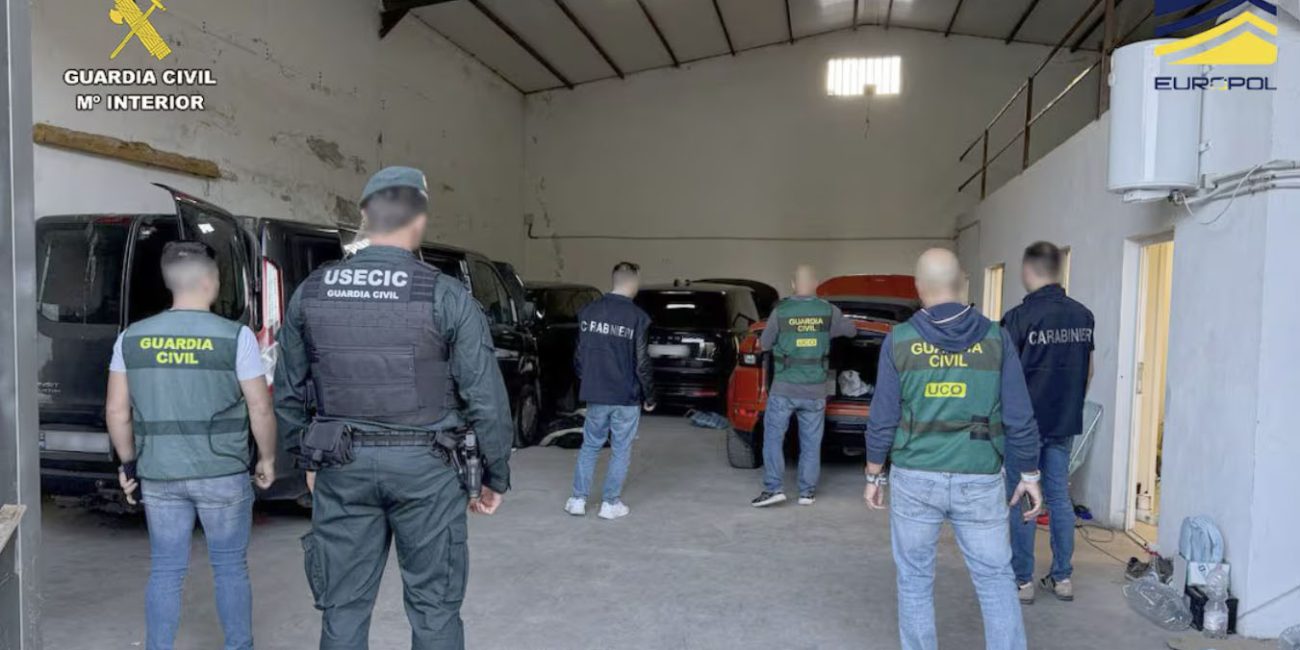They stole expensive cars with accessories like metallic paint or electronic door locks that may cost over €12,000, which is almost the same as the price of a small car. The “most basic” price of the cars they wanted was about €170,000. They used the laws of physics to keep them hidden and make it hard for their owners to find them. For example, they wrapped fabrics around the automobiles to block or weaken electromagnetic waves, like a Faraday cage, or they put a lot of jammers close by that made it hard for geolocation devices to send data. This group that stole luxury cars was shut down this week by the Central Operative Unit of the Judicial Police (UCO) of the Guardia Civil, working with the Italian Carabinieri. They were careful and aware of how to protect their illegal multi-million-dollar business.
The group picked up their cars in high-end places like Marbella (Málaga) and other places in northern Italy, like Forte dei Marmi, Viareggio, and Cortina. Nine people have been arrested in Italy, and investigators have determined that 90 cars worth 18 million euros were stolen.
The criminal cell used the same method in Italy and Spain, which is why both police units worked together on this operation. They could spend 15 days on the Costa del Sol picking out the cars they wanted to steal and then taking them. Then they would transfer them to a warehouse in the Axarquía region of Malaga, which is in the eastern part of the province and around 96 kilometres from Marbella. There, they would make them disappear, even though the country has expensive security systems.
According to people who know about the inquiry, the group’s hiding was in a “very small town” with only one house nearby, where an old couple lived. There were cameras for security both inside and outside. When agents found both the Faraday cages and the many jammers that had been put in place, they were shocked.
According to police estimations, the average value of these cars was over €240,000, although several models worth approximately €300,000 were taken. The group looked for them in places where people play golf, paddle tennis, or shop to steal them. After they figured out who they were, they put tracking devices on them, like Apple’s AirTags, and waited until daylight to attack. Most of the time, the best place was a roadway, a public or residential parking lot, or the street. The Guardia Civil said last week that “They started the vehicle without a key or physical force.” They did this by carefully looking into the weaknesses of these very pricey cars. They understood they could steal them without breaking them by using particular pieces or moving them about. This would lessen the price they could sell them for.
The theft and shipment of these cars from Spain happened in stages. They went back to their home countries after stealing six or seven cars and putting them in a warehouse. Some of them lived in Romania, Italy, or Russia. They stayed there for a while and then went back to Spain during the off-season. On this voyage back, they used electronic equipment to change the vehicle identifying numbers and licence plates and sneaked the cars out of the country. The drivers drove them almost all the way to the Port of Antwerp. They then put them in containers that were going to the United Arab Emirates.
The Italian police said that “all payments (both for the sale of the vehicles and to compensate members of the organisation) were made in cryptocurrency,” which they said was for a business worth “tens of millions of euros.” “Each person had a specific job, such as stealing cars and their parts, changing the chassis and license plate numbers, or providing logistical support.”
It took about a year to finish the investigation. To do this, a joint Italian-Spanish group had to be formed, and Eurojust and Europol had to coordinate the efforts of the police and the courts around the world. Marbella Investigative Court No. 5 is in charge of the case in Spain.









No Comment! Be the first one.